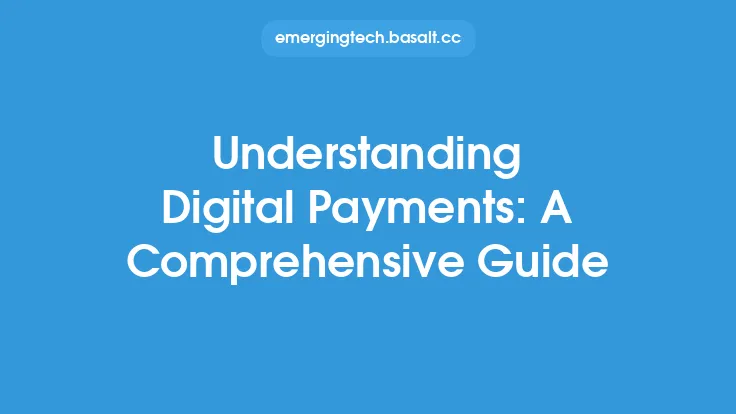The blockchain is a decentralized, digital ledger that records transactions across a network of computers. It is the underlying technology behind cryptocurrencies such as Bitcoin and Ethereum, but its applications extend far beyond digital currency. As the use of blockchain technology continues to grow, so does the importance of ensuring its security. Blockchain security measures are essential to protect the integrity of the network, prevent unauthorized access, and maintain the trust of users.
Introduction to Blockchain Security
Blockchain security refers to the measures taken to protect the blockchain network from unauthorized access, use, disclosure, disruption, modification, or destruction. This includes protecting the network from cyber threats, such as hacking and phishing attacks, as well as ensuring the integrity of the data stored on the blockchain. The security of the blockchain is critical to maintaining the trust of users and ensuring the continued adoption of the technology.
Types of Blockchain Security Measures
There are several types of blockchain security measures that can be implemented to protect the network. These include:
- Network security measures: These measures are designed to protect the network from unauthorized access and use. They include firewalls, intrusion detection systems, and encryption.
- Data security measures: These measures are designed to protect the data stored on the blockchain from unauthorized access, use, or disclosure. They include encryption, access controls, and data backup and recovery procedures.
- Transaction security measures: These measures are designed to protect transactions on the blockchain from unauthorized access, use, or modification. They include digital signatures, transaction verification procedures, and smart contract security.
- Node security measures: These measures are designed to protect the nodes on the blockchain network from unauthorized access, use, or modification. They include node authentication procedures, node access controls, and node monitoring and logging procedures.
Blockchain Security Protocols
Several blockchain security protocols have been developed to protect the network from cyber threats. These include:
- Consensus algorithms: These algorithms are used to validate transactions on the blockchain and ensure that the network agrees on the state of the blockchain. Examples of consensus algorithms include proof of work (PoW) and proof of stake (PoS).
- Digital signatures: These signatures are used to authenticate transactions on the blockchain and ensure that they have not been tampered with.
- Public key cryptography: This cryptography is used to secure transactions on the blockchain and protect the data stored on the network.
- Smart contract security: This security is used to protect smart contracts on the blockchain from unauthorized access, use, or modification.
Blockchain Security Best Practices
Several best practices can be followed to ensure the security of the blockchain network. These include:
- Implementing robust security protocols: This includes implementing consensus algorithms, digital signatures, and public key cryptography to protect the network.
- Conducting regular security audits: This includes conducting regular security audits to identify vulnerabilities and weaknesses in the network.
- Implementing access controls: This includes implementing access controls to restrict access to the network and protect the data stored on the blockchain.
- Providing user education and awareness: This includes providing user education and awareness to ensure that users understand the importance of blockchain security and how to protect themselves from cyber threats.
Blockchain Security Tools and Technologies
Several tools and technologies are available to support blockchain security. These include:
- Blockchain security platforms: These platforms provide a range of security tools and technologies to protect the blockchain network.
- Security information and event management (SIEM) systems: These systems provide real-time monitoring and analysis of security-related data to identify potential security threats.
- Intrusion detection and prevention systems: These systems provide real-time monitoring and analysis of network traffic to identify potential security threats.
- Encryption technologies: These technologies provide secure encryption of data stored on the blockchain and protect it from unauthorized access.
Conclusion
Blockchain security measures are essential to protect the integrity of the blockchain network, prevent unauthorized access, and maintain the trust of users. By implementing robust security protocols, conducting regular security audits, and following best practices, organizations can help ensure the security of the blockchain network. The use of blockchain security tools and technologies can also support the security of the network. As the use of blockchain technology continues to grow, the importance of ensuring its security will only continue to increase.





